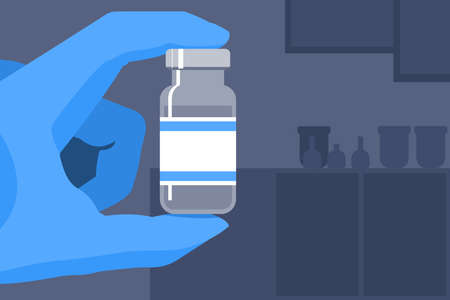Introduction: Unveiling the British Lifestyle
When considering the health of men’s skin in the UK, it is essential to first understand the unique aspects of British daily life that influence skin condition. The traditional British diet is often characterised by hearty meals featuring red meats, fried foods, and a substantial intake of carbohydrates such as potatoes and bread. While classic dishes like fish and chips or a full English breakfast are beloved staples, they often come with high levels of saturated fats and salt. Alongside dietary habits, Britain’s renowned drinking culture plays a significant role in everyday social life. Whether it’s frequenting the local pub after work or enjoying pints during weekend gatherings, alcohol consumption—especially beer and spirits—remains prevalent among British men. These lifestyle choices, ingrained in both tradition and modern social norms, have a direct impact on overall health and, more specifically, on the condition and appearance of male skin. By examining these patterns closely, we can better appreciate how everyday choices may contribute to common skin concerns faced by men across the UK.
Dietary Habits and Their Effects on Male Skin
British dietary habits are as diverse as the nation’s history, yet certain staples—such as classic pub fare, fish and chips, full English breakfasts, and ready meals—remain at the heart of many men’s weekly routines. While these foods offer comfort and tradition, their nutritional profiles can have a significant impact on skin health, particularly for men who may already face challenges with oiliness, breakouts, or premature ageing.
Popular British Foods: What’s on the Plate?
Let’s examine some common elements of the British male diet and how their nutrient content—or lack thereof—can affect the skin:
| Food Item | Nutritional Highlights | Potential Skin Impact |
|---|---|---|
| Fish & Chips | High in saturated fats, low in vitamins | May contribute to increased sebum production and clogged pores; lack of antioxidants can slow skin repair |
| Full English Breakfast | Processed meats, fried eggs, baked beans; high salt and fat content | Excess salt can lead to dehydration and puffiness; processed meats may increase inflammation linked to acne |
| Pub Grub (e.g., pies, sausage rolls) | Rich in carbohydrates and trans fats | Trans fats can accelerate skin ageing and worsen inflammatory skin conditions |
| Ready Meals | Convenient but often lacking in fresh vegetables and essential nutrients | Nutrient deficiencies (especially vitamins A, C, E) hinder skin regeneration and protection against environmental stressors |
| Crisps & Chocolate Bars (Snacks) | High sugar and salt levels; minimal micronutrients | Sugar spikes insulin levels, which can trigger breakouts; salt exacerbates water retention and dullness |
The Nutrient Deficiency Dilemma
A diet heavy in processed foods and low in fresh fruit, vegetables, nuts, and oily fish creates gaps in vital nutrients such as zinc, omega-3 fatty acids, vitamin C, and antioxidants. These deficiencies directly influence male skin by:
- Reducing collagen production: Leading to sagging skin and fine lines.
- Diminishing barrier function: Making skin more susceptible to dryness, irritation, and sensitivity.
- Slowing wound healing: Increasing the risk of post-shaving irritation or persistent blemishes.
- Aggravating inflammation: Exacerbating conditions like eczema or acne vulgaris.
A Balanced Approach: Small Tweaks for Big Gains
The good news is that small changes—such as swapping out one ready meal per week for a home-cooked dinner with lean protein and plenty of colourful veg—can yield noticeable improvements. Incorporating more whole grains, berries, leafy greens, and oily fish supports healthier skin texture, reduces flare-ups, and helps maintain a youthful glow even amidst the hustle of modern British life.

3. Alcohol Consumption: The Hidden Toll on Skin
In the UK, alcohol forms a central part of social life, with statistics consistently showing high rates of both regular and binge drinking among British men. Pubs are cultural landmarks, and weekend nights often revolve around rounds of pints or cocktails. However, beneath this conviviality lies a less-discussed reality: the impact of habitual drinking on male skin health. Excessive alcohol intake dehydrates the body, leading to dullness, loss of elasticity, and a prematurely aged appearance. This is particularly noticeable in men who engage in frequent binge drinking—a pattern that spikes inflammation, triggers flare-ups of conditions like rosacea, and worsens under-eye puffiness. Furthermore, alcohol dilates blood vessels, resulting in persistent redness or broken capillaries, especially across the nose and cheeks. For British men, whose fairer complexions can make such issues more visible, these effects are often exacerbated by environmental factors such as cold winds or urban pollution. Over time, repeated episodes of heavy drinking not only compromise overall health but also undermine the skin’s natural barrier function, leaving it vulnerable to irritation and sensitivity. Thus, while sharing a pint may be a staple of British camaraderie, it comes with dermatological consequences that deserve attention—particularly for those seeking to maintain a healthy and youthful complexion.
4. Regional Differences and Social Influences
The United Kingdom is renowned for its rich tapestry of regional cultures, social structures, and class distinctions—each playing a significant role in shaping dietary habits, alcohol consumption, and ultimately, male skin health. Geography often dictates access to fresh produce and influences traditional diets, while social circles and class backgrounds affect attitudes towards drinking and nutrition.
Geographical Variation in Diet and Alcohol Consumption
In the UK, there are marked differences between urban centres such as London or Manchester and rural areas like Yorkshire or Cornwall. Urban residents typically have greater access to diverse food options, including fresh fruits and vegetables, compared to those in more remote regions where processed foods might be more prevalent due to convenience. This disparity has direct implications for skin health, as nutrient-rich diets support better hydration and resilience against environmental stressors.
| Region | Dietary Patterns | Alcohol Preferences | Typical Skin Concerns |
|---|---|---|---|
| London & South East | Mediterranean influence, higher intake of fresh produce | Cocktails, wine, craft beer | Pollution-induced dullness, dehydration |
| Northern England & Scotland | Traditional British fare, higher intake of red meats and fried foods | Ale, whisky, lager | Oiliness, redness from alcohol consumption |
| Rural Wales & South West | Locally sourced meats, dairy-heavy diets | Cider, stout | Sensitivity, occasional dryness from weather exposure |
The Role of Class and Social Circles in Lifestyle Choices
Beneath the surface of regional variation lies another powerful force: social class. Working-class communities may gravitate toward affordable, calorie-dense foods and regular pub culture—often linked with higher alcohol intake. Middle- and upper-class groups might favour organic produce and moderate their alcohol consumption at home or in exclusive venues. These choices are not merely personal but are shaped by long-standing traditions and peer influence within each social circle.
Social Influence on Skincare Awareness and Practice
An additional layer is the growing awareness around skincare routines among different demographics. In metropolitan hubs with strong professional networks, men are increasingly adopting advanced skincare practices influenced by global trends. By contrast, in smaller towns or traditional communities, skincare may still be regarded as secondary to other lifestyle factors.
Summary Table: Social Factors Affecting Male Skin Health Across the UK
| Social Factor | Effect on Diet/Alcohol Use | Skin Health Outcome |
|---|---|---|
| PUB Culture (Working Class) | Frequent alcohol intake; comfort food diet | Prone to redness, breakouts, dehydration |
| Wellness Trends (Middle/Upper Class) | Balanced diet; moderate drinking; focus on superfoods | Improved elasticity; slower ageing signs; fewer blemishes |
| Cultural Traditions (Ethnic Communities) | Diets influenced by heritage; varying alcohol norms | Diverse skin responses based on genetic and dietary factors |
This intricate interplay between region, class, and social networks means that any approach to improving male skin health across Britain must be tailored to reflect these unique cultural nuances.
5. Expert Insights and Professional Recommendations
When it comes to understanding the unique challenges British men face regarding skin health, leading UK dermatologists and nutritionists offer invaluable perspectives. Dr. James Alcott, consultant dermatologist in London, notes that “frequent exposure to variable weather, combined with high consumption of processed foods and alcohol, sets the stage for common issues such as dehydration, redness, and premature ageing among British men.” His observations are echoed by registered nutritionist Hannah Clarke, who adds, “The typical British diet—often high in salt, saturated fats, and sugars—can exacerbate inflammation and worsen skin conditions like acne and rosacea.”
Best Practices for Skin Health: Tailored to British Lifestyles
Experts recommend prioritising hydration by drinking plenty of water and opting for herbal teas over caffeinated or alcoholic beverages. Incorporating more fresh vegetables, oily fish (such as mackerel or salmon), and whole grains into meals can help counteract the effects of pub fare and fast food. Dr. Alcott emphasises the importance of daily skincare routines that protect against both urban pollution and unpredictable weather—using gentle cleansers, broad-spectrum SPF, and moisturisers suitable for sensitive male skin.
Minimising Alcohol’s Impact
NHS-affiliated nutritionists suggest limiting alcohol intake to government-recommended guidelines—no more than 14 units per week—and choosing lighter options like white wine spritzers or low-alcohol beers when socialising at the pub. This moderation helps reduce inflammation and visible signs of ageing on the skin.
Practical Lifestyle Adjustments
Finally, experts agree that small lifestyle changes can make a noticeable difference: swapping late-night takeaways for home-cooked meals, integrating brisk walks or cycling into daily routines (even on rainy days), and seeking professional advice when persistent skin problems arise. By adapting these recommendations to fit modern British living, men can maintain healthier skin while still enjoying the social aspects of their culture.
6. Before-and-After: Real Stories from British Men
To bring the discussion to life, let’s examine real-life case studies of British men who have made significant changes to their diets or drinking habits and experienced remarkable improvements in their skin health. These stories showcase how everyday choices can lead to visible transformations.
James, 42, London: Swapping Takeaways for Home-Cooked Meals
James, a busy IT consultant from London, relied heavily on fast food and ready meals due to his hectic lifestyle. His skin was often oily, prone to breakouts, and looked perpetually tired. After consulting with a nutritionist, James decided to cut down on processed foods and started preparing balanced meals at home. Within three months, he noticed reduced inflammation, fewer spots, and a healthier complexion. James remarks that colleagues frequently comment on his fresher appearance.
Tom, 29, Manchester: Cutting Down on Pints
Tom enjoyed socialising at the local pub several nights a week, consuming five to six pints each time. Over the years, he developed visible redness around his nose and cheeks—a classic sign of alcohol-related rosacea. Concerned about his appearance and overall wellbeing, Tom reduced his alcohol intake by half and introduced more water and non-alcoholic alternatives into his routine. After four months, Tom’s skin redness subsided noticeably, and he reports feeling more energetic.
Sanjay, 35, Birmingham: Embracing Antioxidant-Rich Foods
Sanjay’s diet previously lacked fresh fruit and vegetables; he often skipped breakfast and grabbed pastries on the go. His skin appeared dull and uneven. Inspired by his partner’s healthy eating habits, Sanjay began incorporating berries, spinach, nuts, and oily fish into his diet. Six weeks later, friends commented on the newfound glow to his complexion. Sanjay attributes this improvement to the antioxidants and vitamins now present in his daily meals.
The Takeaway: Small Changes, Noticeable Results
These case studies demonstrate that even modest adjustments—whether it’s reducing alcohol consumption or improving diet quality—can yield tangible benefits for male skin health. British men across different regions are proving that positive change is both achievable and rewarding.
7. Conclusion: Practical Steps Towards Healthier Skin in the UK
British men face unique challenges when it comes to skin health, largely shaped by local diet habits, social drinking culture, and the unpredictable UK weather. However, practical strategies can help mitigate these factors and promote healthier skin. Below, we summarise actionable steps tailored specifically for British men seeking to improve and maintain their skin condition amidst these cultural realities.
Moderate Alcohol Consumption
While sharing a pint at the pub is a cherished British pastime, moderation is key. Limiting alcohol intake—sticking within NHS-recommended guidelines—can significantly reduce dehydration and inflammation, both of which negatively impact skin quality. Opting for lighter drinks or alternating with water can further help minimise the toll on your complexion.
Embrace a Balanced Diet
The traditional British diet often features high-fat, processed foods and frequent takeaways. Incorporating more fresh fruit, vegetables, oily fish, and whole grains can provide essential antioxidants and nutrients that support skin repair and resilience. Swapping out greasy fry-ups for grilled options and adding more leafy greens to daily meals are simple yet effective changes.
Stay Hydrated All Year Round
Due to both climate and lifestyle, many British men overlook hydration. Carrying a reusable water bottle to work or while commuting makes it easier to meet daily fluid needs. Herbal teas are also an excellent alternative during colder months.
Protect Against the Elements
The UKs climate—with its frequent rain, chilly winds, and sporadic sunshine—demands tailored skincare protection. Using a daily moisturiser suitable for your skin type helps retain moisture in harsh weather, while a broad-spectrum SPF is essential even on overcast days.
Integrate Simple Skincare Routines
Establishing a straightforward routine—cleanse morning and night, moisturise daily, and exfoliate weekly—can yield noticeable improvements. Many reputable British brands offer products formulated for male skin that cater to different concerns, from dryness to oiliness.
Seek Professional Advice When Needed
If persistent issues like acne or redness occur, don’t hesitate to consult a GP or dermatologist. Early intervention ensures minor problems don’t escalate into long-term concerns.
Ultimately, small but consistent changes aligned with British lifestyle norms can greatly enhance skin health. By making informed choices about diet, alcohol consumption, hydration, and skincare routines, British men can take control of their skin’s future—without sacrificing the cultural experiences they value most.


